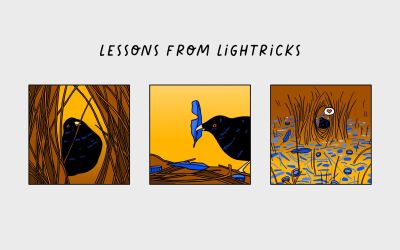UXR Maturity: move to a more advanced level in your org
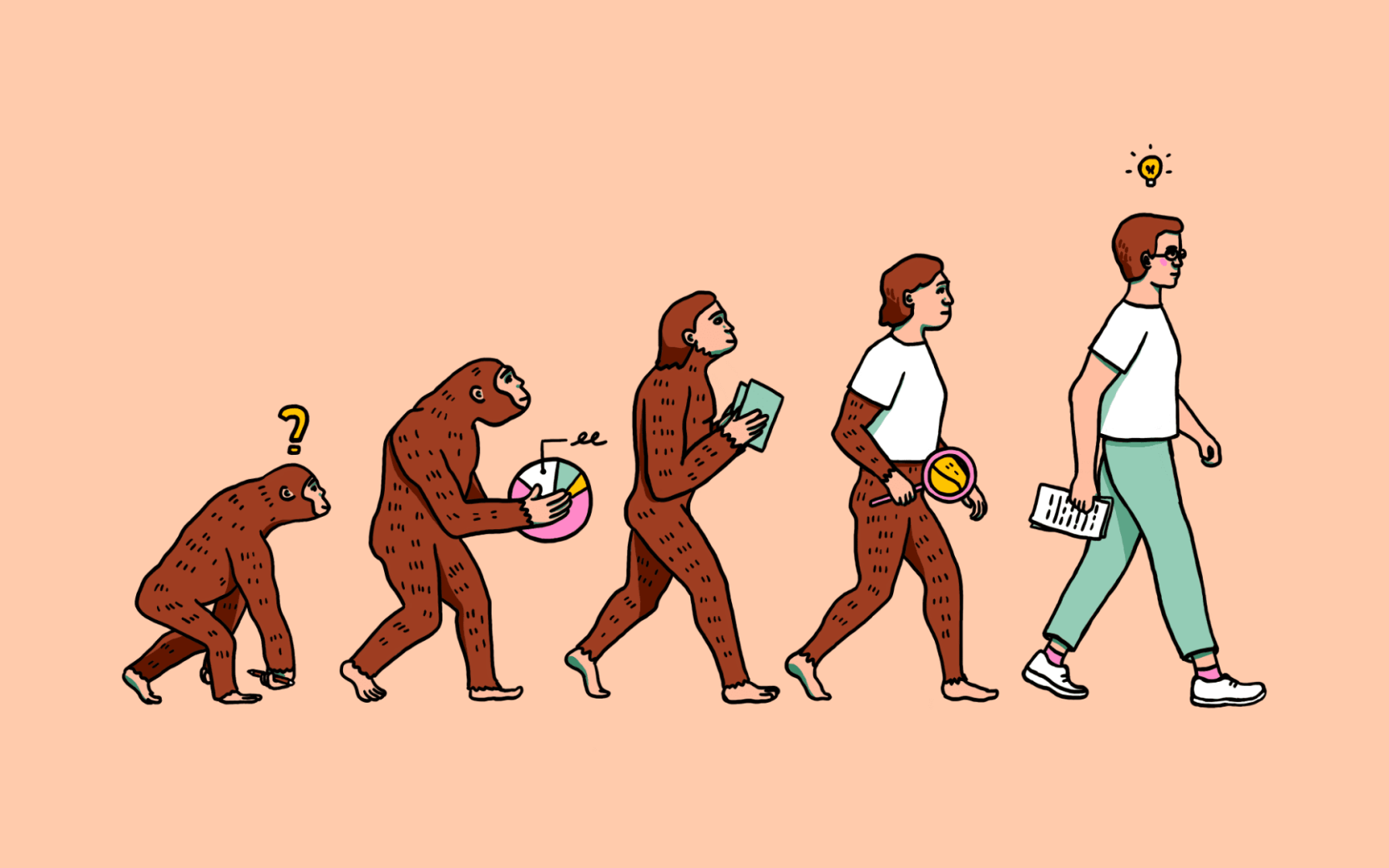
Have you ever thought about the quality and effectiveness of the user research practice at your current company? Or where your company stands in terms of how you are currently using user research? Or, most importantly, what level are you on and how to get to the next level of user research?
I used to think about this all the time. Processes, frameworks, and how I am was running user research at an organization would keep me up at night. Was I doing it right? How did I compare to others? It felt like there was no framework available to benchmark my work to bring user research into an organization. Fortunately, a few years back, I attended a meetup about the concept of UXR Maturity models. It was that exact framework I was looking for, and I scrambled to understand it better.
After a few tries (and lots of Googling), I found several examples online to use as a jumping-off point. Since then, I have used UXR Maturity models at every organization and shared them widely with my students.
What is UX Maturity?
UX maturity is as it sounds: essentially, it’s how mature your organization is when dealing with UX and user research practices. You can assess maturity at a broader UX level or focus on user research maturity. I recommend doing both! Fortunately, some researchers have dived into this space and created wonderful resources for us to use.
A UX maturity model enables an individual to accomplish what I mentioned above: assess how mature a company is with their user research.
For me, UX maturity models are a guide in understanding the purpose of user research in a company, whether it is non-existent, a tool to validate design decisions, a way to discover new insights, a method to innovate, or a combination of the above (the good ones, usually). A model like this gives you a clear framework, allowing you to understand where you currently lie on the UXR maturity scale and what you have to do to get to the next steps.
Generally, the more mature a company is, the easier it should be to include user research in an organization’s processes.
What can assessing UX maturity do for you?
Assessing where your company currently lies within a UXR maturity model is essential for several reasons:
Obtain a greater understanding of how much buy-in user research currently has in your organization
You acquire action items for what you need to do as a user researcher to move the company in a more user-centric direction
Helps gain buy-in by approaching user research in the most appropriate way for your organization
Answers questions like, “Am I doing this right?” or “what do I do next?”
When I was first assessing UXR maturity at my organization, it forced me to take a step back. Yes, I wanted to do advanced generative research on complex topics, but were we at a point to do that? What else did I have to put into place first?
Instead of rushing ahead with impatience, I carefully considered the foundation I had to lay to make us successful in the future. The exercise was eye-opening, and I’ve used it ever since.
How to assess UXR maturity
UX maturity models tend to have five or six different levels, depending on the resource. Here are the most common hierarchies of UX research maturity:
Absence/Unawareness of UX Research: The organization is unaware of user research and the value of conducting research. There is an absence of processes and movement in user research.
UX Research Awareness—Ad Hoc Research: The organization is aware of user research but misunderstands the purpose. It is often used as a tool to validate changes or to “make something look pretty.” Frequently, there will be ad hoc research requests that come very late in the pipeline
Adoption of UX research into projects: User research comes into projects earlier than in stage two and starts to become part of whatever development cycle the team is using (e.g., agile)
Maturing UX research into an organizational focus: User research becomes part of the organizational process. Teams and stakeholders are bought in and conduct research whenever necessary.
Integrated UX research across strategy: Instead of informing or validating minor aesthetic changes, user research informs product strategy, as well as other strategies across the organization (e.g., marketing, account management, etc.)
Complete UX research culture—What every user researcher wants their organization to be: the entire company is research-centric and driven by a need to understand users. UX is an integral part of the organization’s thinking process at every level
There are many models available to use, such as the one below, used by GetYourGuide. This model is a great way to get started in determining, at a high level, where the UX maturity lies at your organization.
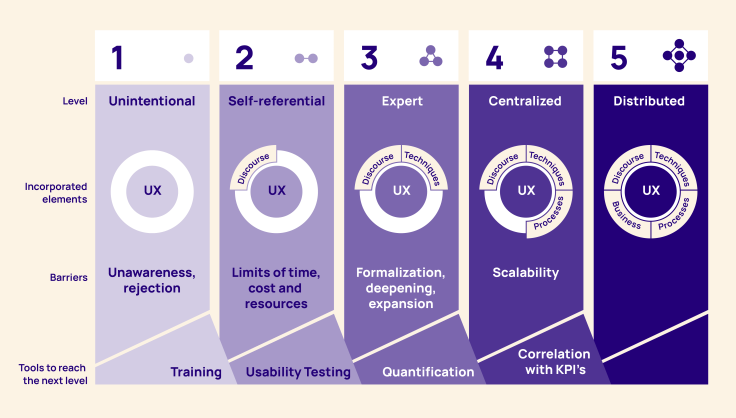
Once you get this overview of the UX maturity, you can dive in a little deeper, using this more detailed model by Nasdaq:
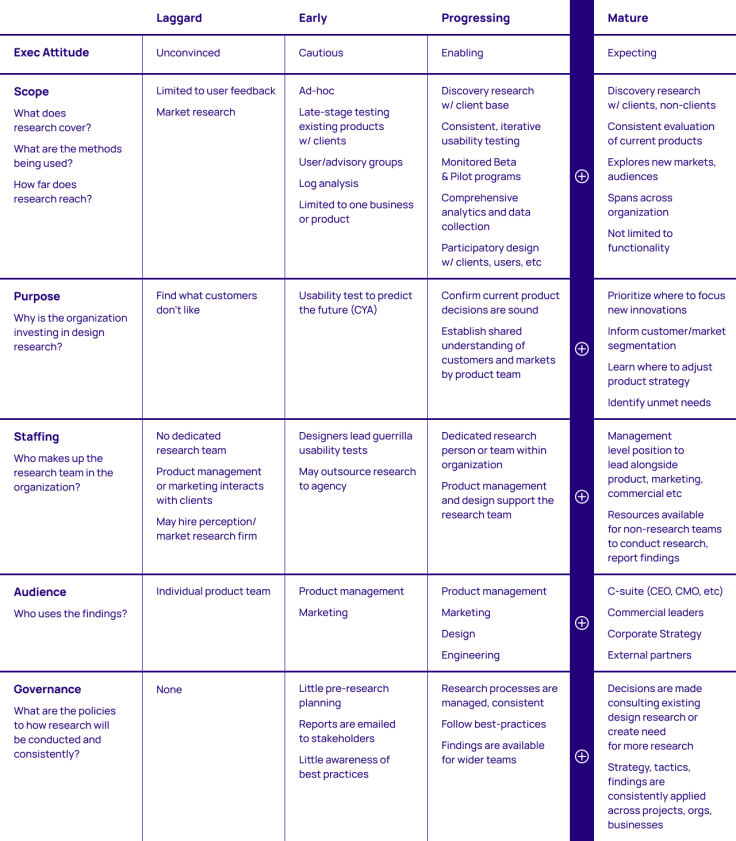
This maturity model can end up looking more like a bingo board, with some areas that may be more mature than others, which is why I love it and have used it at previous companies. I identified our overall maturity using the first model, but I knew Nasdaq’s model would work better because we were further along in some areas than others.
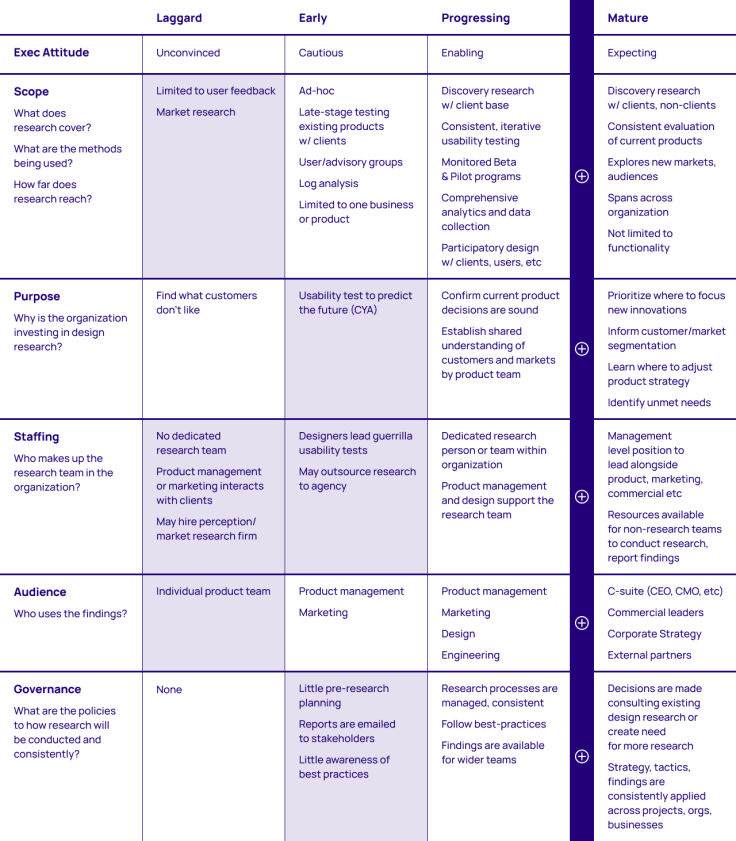
UX Maturity Model: from A to B
After completing this model, I broke down the hurdles and opportunity areas into three areas: operational, organizational, and strategic.
Operational hurdles
Goal: Improve day-to-day user research
No external testing
Small budget
Long recruitment process
No easy GDPR consent tools
Few tools for scheduling, recruitment, synthesis
No concept of UX data tracking
Organizational hurdles
Goal: Ingrain user research into the organization
Little understanding of user research
UX (and user research) siloed from the organization
Little leadership buy-in (e.g., takes too long, costs too much)
No shared concepts and understanding of users (e.g., personas, journey maps)
Strategic hurdles
Goal: Move from tactical user research to influencing product strategy
No discovery research
No prioritization from senior leadership
I decided on the following steps to advance the user research maturity at the organization:
Move into the direction of discovery research—I ran generative research studies regularly, but there was a lot more work I needed to do in terms of education and how to work alongside our squads with this discovery research
Start beta and pilot programs as soon as we have new concepts applicable to these types of methodologies
Diversify our methodologies to more easily collect data (e.g., include unmoderated testing to speed up feedback-gathering)
Increase our data collection and analytics game regarding user research metrics (such as time on task, task success)
Create outputs that foster shared understanding throughout the team, such as personas, user journeys, user scenarios, comic storyboards
Ensure I integrate research throughout all the different departments (e.g., marketing, customer support)
Focus on creating more frameworks and processes across user research, especially in our agile development
I immediately got to work on these specific action items and kept the hurdles in the back of my mind. Finally, after a year of steady progress, I updated our maturity map:
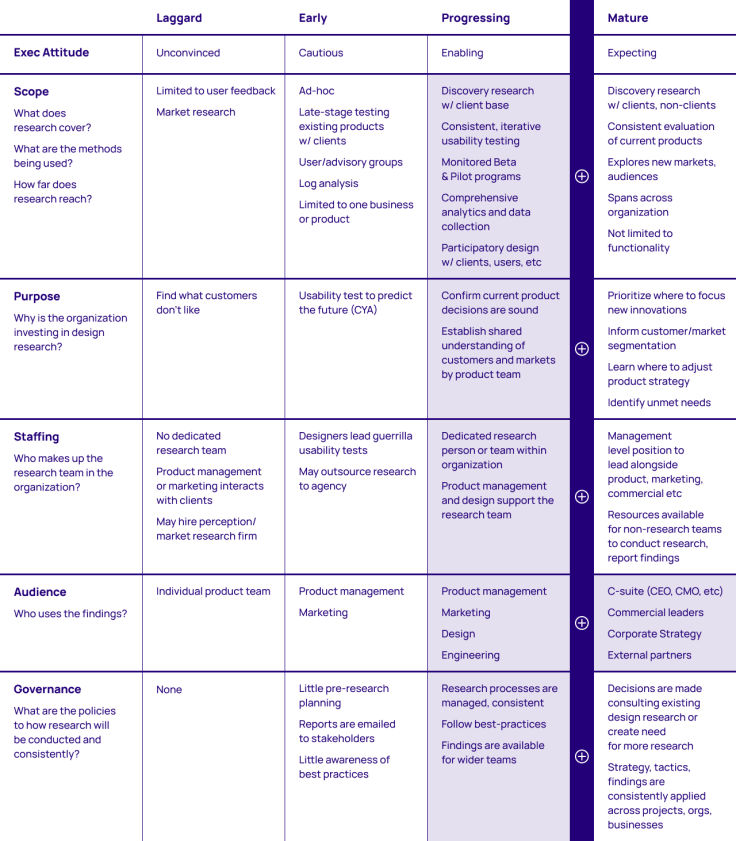
Although I already had an idea that this was the necessary work to level up user research, it was undoubtedly helpful to map out where we currently were on a pre-defined model, where I could easily see the next steps. Especially in times of confusion or when you hit the “what do I fix next” wall, UXR maturity models are a crucial partner for getting you clarity and inciting action.
Written by Nikki Anderson, User Research Lead & Instructor. Nikki is a User Research Lead and Instructor with over eight years of experience. She has worked in all different sizes of companies, ranging from a tiny start-up called ALICE to large corporation Zalando, and also as a freelancer. During this time, she has led a diverse range of end-to-end research projects across the world, specializing in generative user research. Nikki also owns her own company, User Research Academy, a community and education platform designed to help people get into the field of user research, or learn more about how user research impacts their current role. User Research Academy hosts online classes, content, as well as personalized mentorship opportunities with Nikki. She is extremely passionate about teaching and supporting others throughout their journey in user research. To spread the word of research and help others transition and grow in the field, she writes as a writer at dscout and Dovetail. Outside of the world of user research, you can find Nikki (happily) surrounded by animals, including her dog and two cats, reading on her Kindle, playing old-school video games like Pokemon and World of Warcraft, and writing fiction novels.
Get started for free
Log in or sign up
Get started for free
or
By clicking “Continue with Google / Email” you agree to our User Terms of Service and Privacy Policy

